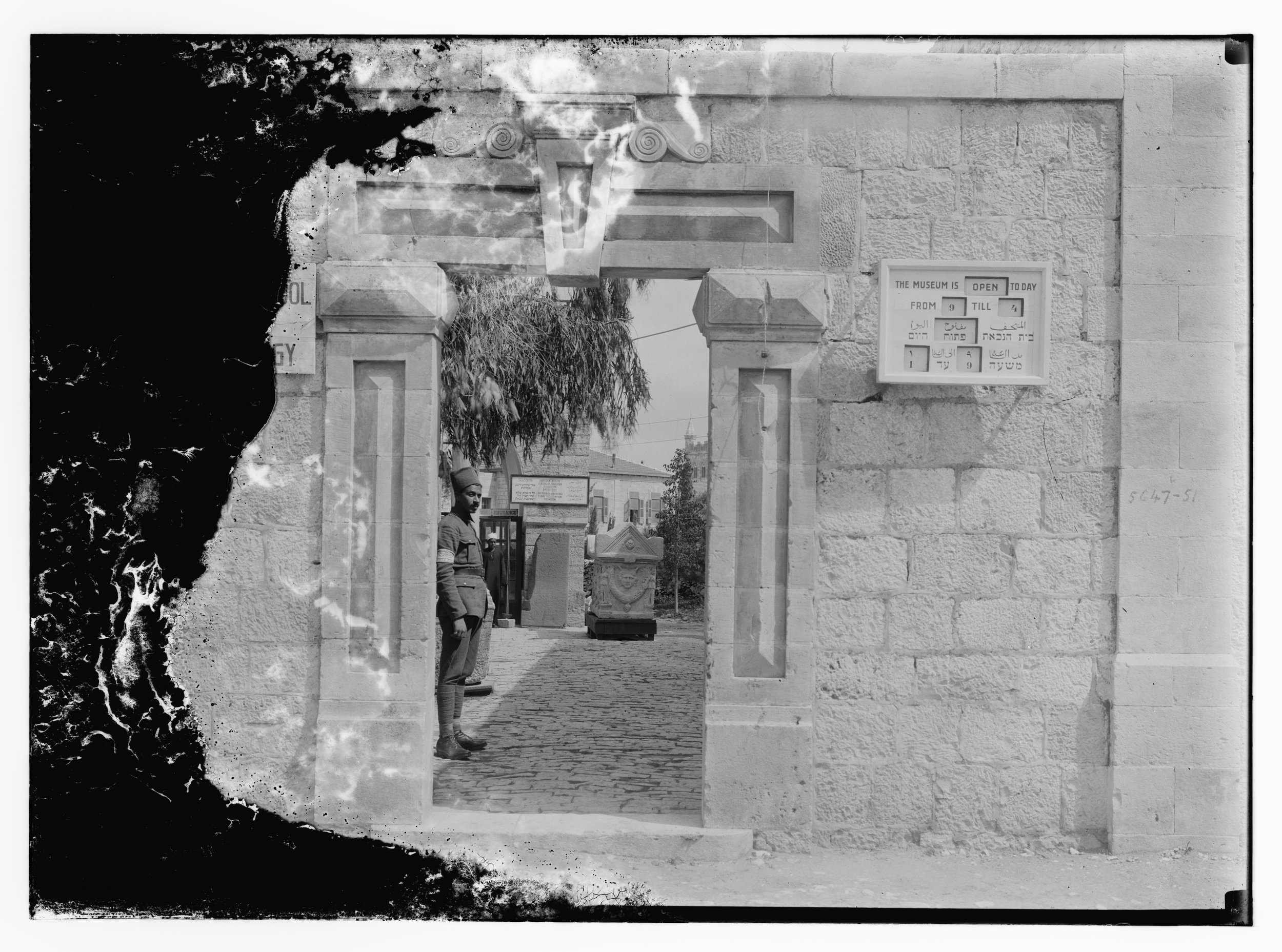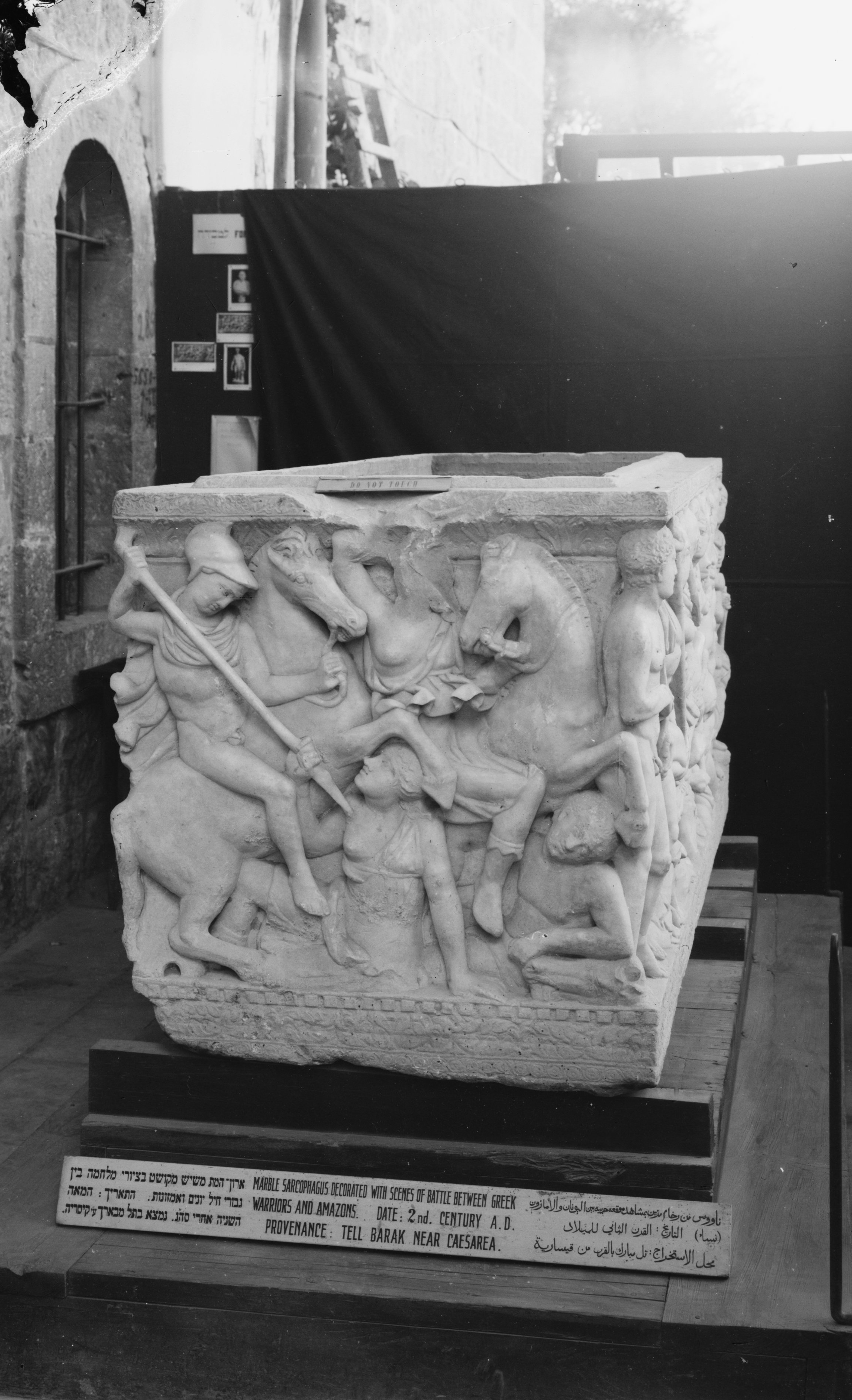The Museums and Galleries History Group are delighted to host the following blog post by the one of the runners up of our recent competition, Chloe Emmott.
I have been researching the Palestine Archaeological Museum as part of my PhD thesis on British archaeology in Palestine. I am interested in how we interact with the past via its material remains and how these interactions are shaped by the wider socio-political context of the times, and this is what has sparked my interest in museums.
The Palestine Archaeological Museum is an example of how colonial museums were used a vehicle for state-building, and as venues in which colonial territories were explained in the voice of the imperial power. It stands alongside others such as the Egyptian Museum in Cairo which Christina Riggs describes as a ‘stage on which to act out Europe’s command over the antiquities of Egypt’, and the Iraq Museum, opened in 1923, under the direction of British archaeologist Gertrude Bell. (Iraq also being a British Mandate in previously Ottoman territory).
The museum opened in 1921, with an opening ceremony attended by the High Commissioner of Palestine, Sir Herbert Samuel. The museum formed a key part of a post-war propaganda strategy which saw the British emphasise how they were rescuing the antiquities from years of supposed Ottoman corruption and neglect. Museum keeper, W.J. Phythian Adams, suggested that antiquities were ‘ransacked, neglected, and forgotten’ under the Ottomans and had now ‘been rescued from oblivion’. However, the bulk of the museum collection was inherited from the Ottoman Imperial Museum of Jerusalem, founded in 1901, and despite the concerns of Phythian Adams, were in good condition when inherited by the British, with no reports of damage.
The museum used the display of its collections to promote a linear historical narrative which emphasised the role of Palestine as part of the cultural heritage of the British Empire, whilst disconnecting it from contemporary Palestine, the Palestinians, and the Arab world. The Mandate demonstrated attempts to create an equal society, such as the policy of three official languages - English, Arabic and Hebrew, which can be seen here in the Museum’s signage (figures 2 & 3). The Mandate was, however, embedded in a system of racial hierarchy which saw Palestinian Arabs, who were predominantly Muslim, at the bottom and white, Christian Europeans at the top. This was reflected in the museum’s staff, who at the top levels were all white and British. The few Palestinians who did rise through the ranks, tended to be middle-class, Christian and educated in British-run schools. Albert Glock’s research suggests that in March 1947 only four Palestinians out of the seventy-three employed by the Department of Antiquities held higher positions – namely three junior inspectors and one librarian, and there is little reason to believe that the statistics for the early mandate period were different. The vast majority of Palestinians employed held lower status roles, such as guards like the unnamed figure in figure 2.
Most excavations in Palestine were undertaken by teams from Europe and the US who were interested almost exclusively in Biblical archaeology, which led to a bias in the museum’s collections - they do not cover anything much earlier than the Early Bronze Age or any later than the Roman or Byzantine era, meaning there is an almost complete absence of any Islamic and Ottoman era material. The collections were organised chronologically and cover the Biblical and Classical eras, with other periods represented by only a few token artefacts. This created a conceptual divide, disconnecting contemporary Palestinians from their heritage by claiming Palestine as part of the British Empire’s cultural heritage. The Museum, through its focus on Biblical and Classical remains - such as the stunning sarcophagi from Ashkelon and Tell Barak (figure 3) - presented a history which connected the British to Palestine via a narrative of ‘western civilisation’. The Illustrated London News of August 16, 1924, praised them as ‘Gems of Classical Art’, emphasising their Europeanness and the coup of the British discovery.
In A Century of Excavation in Palestine, R.A.S. Macalister, an Irish archaeologist who worked in Palestine from the 1890s until the 1920s, describes the faces on one of the sarcophagi (seen in figure 3) as having ‘a strangely Oriental cast of countenance that could be matched by faces to be met with in a walk-through Jerusalem of to-day.’ This suggests the sarcophagus has both a connection to the peoples of Palestine, and that Macalister recognises this, but also that a Classical piece is somehow ‘strange’ for having faces with non-European features. Yet Palestine was part of the Greek world, as was much of Asia Minor and North Africa. This is an example of the whitewashing of the Classical world and the creation of a Eurocentric narrative of history.
This separation, which draws a clear barrier between the Biblical and Classical past and the present, Islamic- and Ottoman-influenced Middle East, is one which we can still see in many western museum collections today. Many Ancient Near Eastern collections (the use of the outdated term ‘Near East’ creating further distance with the modern Middle East) are displayed in a manner which disconnects them from the contemporary Middle East. In contrast many Classical collections are seen as more connected to modern Europe, particularly when you consider the Neo-Classical architecture of many museums, which was intended to visually connect these new museums to the grandeur of the classical past. Indeed, many ancient ‘Near Eastern’ collections are displayed to emphasise the role of Mesopotamia as the ‘cradle of civilisation’, in relation to its perceived role as the ancestor of ‘western civilisation’. And it is exactly this emphasis, which highlights the connection between Palestine as the Holy Land and as part of the Classical world, as being part of the cultural heritage of the British Empire which we see in the Museum.
Whilst the British kept most artefacts in Palestine, they still created a narrative which connected themselves to Palestine and disconnected the Palestinians. This disconnection is echoed today, as the museum’s current incarnation – the Rockefeller Archaeological Museum, lies in occupied East Jerusalem, inaccessible to the vast majority of Palestinians.
Images
Figure 1. Exterior view of the museum. ‘The former Palestine Archaeological Museum & objects in the museum’ (LC-DIG-matpc-09880), Matson (G. Eric and Edith) Photograph Collection, Library of Congress https://www.loc.gov/pictures/item/2019701345/
Figure 2. The museum guard at the entrance. ‘The former Palestine Archaeological Museum & objects in the museum’ (LC-DIG-matpc-09881), Matson (G. Eric and Edith) Photograph Collection, Library of Congress https://www.loc.gov/pictures/item/2019701346/
Figure 3. A sarcophagus from Tell Barak on display in the museum. ‘The former Palestine Archaeological Museum & objects in the museum’ (LC-DIG-matpc-09882) Matson (G. Eric and Edith) Photograph Collection, Library of Congress https://www.loc.gov/pictures/item/2019701347/
Sources and further reading
Gitler, Inbal Ben-Asher and Bar Leshem, ‘Creating Museum Culture in Mandate Palestine’, Israel Studies 26, no. 3 (2021): 138–57, https://doi.org/10.2979/israelstudies.26.3.09
Glock, Albert ‘Archaeology as Cultural Survival: The Future of the Palestinian Past’, Journal of Palestine Studies 23, no. 3 (1994): 70-84 , https://doi.org/10.2307/2537961
Irving, Sarah ‘Palestinian Christians in the Mandate Department of Antiquities: History and Archaeology in a Colonial Space’, in European Cultural Diplomacy and Arab Christians in Palestine, 1918–1948 (Springer, 2020): 161–85, https://link.springer.com/chapter/10.1007/978-3-030-55540-5_9
Macalister, Robert Alexander Stewart A Century of Excavation in Palestine (Religious Tract Society, 1925).
Riggs, Christina. "Colonial visions: Egyptian antiquities and contested histories in the Cairo Museum." Museum Worlds 1, no. 1 (2013): 65-84.
St Laurent, Beatrice and Himmet Taşkömür, “The Imperial Museum of Antiquities in Jerusalem, 1890-1930: An Alternative Narrative,” Jerusalem Quarterly (2013): 6-45, http://vc.bridgew.edu/art_fac/7
Phythian-Adams, W. J ‘The Future of Excavation in the Holy Land’, Asiatic Review XVII (April 1921): 333–38.


